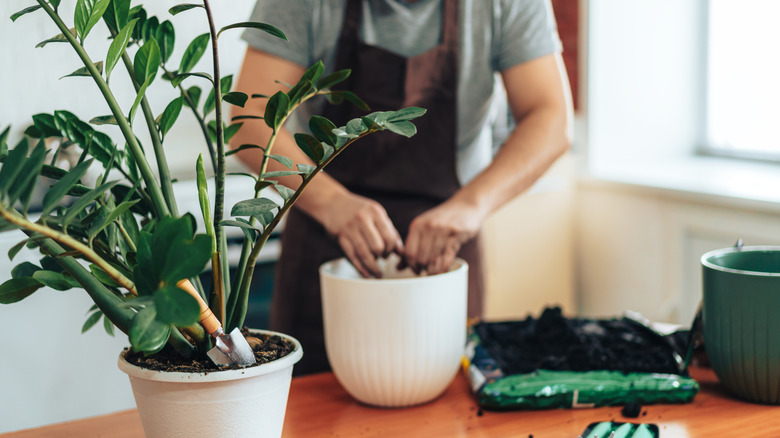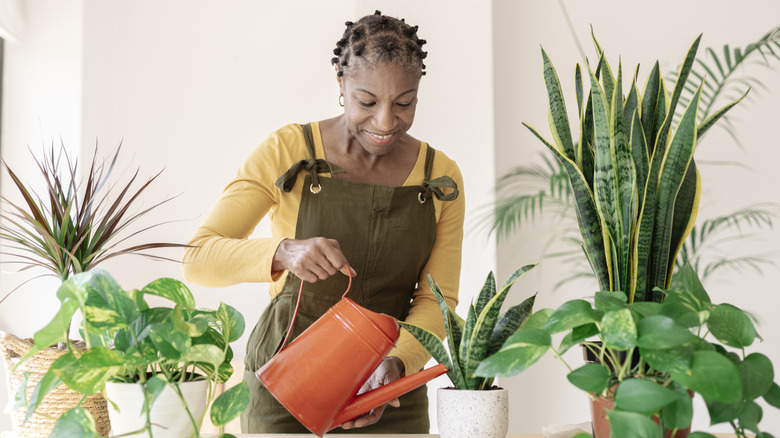The Plant Mistake You're Making That's Bringing Pests Into Your Home (& How To Fix It)
Having plants indoors can be a rewarding experience that can instantly improve your home's design. What's more, many houseplants are good for your health, as they are associated with better mood and decreased stress levels. Some types may even improve the air quality in your home. If you grow certain herbs in containers on your deck or patio, you might be able to bring them inside during the harsh winter months, too. Sometimes having indoor plants can have unintended consequences, though. This includes the common mistake of overwatering your plants, which can possibly attract pests into your home.
Overall, indoor plants have fewer pest problems than outdoor plants. This doesn't mean your houseplants are completely immune to pests, though, and overwatering them can contribute to the problem. Among some of the most common pests that plague indoor plants include smaller insects and mites, but these tend to affect the leaves of your plants. If you're seeing other types of pests around the soil of your plants, such as ants and gnats, this could be a sign that they're attracted to water that may be present here. In particular, overwatering indoor plants increases the risk of fungus gnat infestations. You'll also want to water your houseplants the right way during winter to help reduce pest problems year-round.
How to water indoor plants without drawing bugs into your home
Plants struggle to ward off pests if they are not in good health, and this includes the presence of too much water in their soil. It's helpful to know the right amount of water your particular plant needs based on the species, with succulents generally requiring less water overall. Plants that get more sunlight near windows may need more water, as well as those that have looser soils.
Allowing the soil of your plants to dry completely in between waterings can be particularly helpful in controlling fungus gnats. As such, you might consider refraining from watering your plants unless the soil is indeed dry. You can also tell whether your plants need more water based on whether the soil is dry to the touch. Another technique is to see if the soil color has changed from a dark color to a lighter one.
Aside from giving your indoor plants the correct amount of water, it's also important that they have enough draining holes in their pots and containers. Do not allow your plants to sit in standing water due to the risk of pests, as well as root rot. Make sure you empty the saucers holding any of the excess water underneath the plants that might otherwise attract pests. Be sure to always water your indoor plants at the soil level and not their foliage to ensure the roots get enough water. It's also important to know what fungus gnats are and how to get rid of them so that you can be prepared if these pests do attack overwatered plants.

